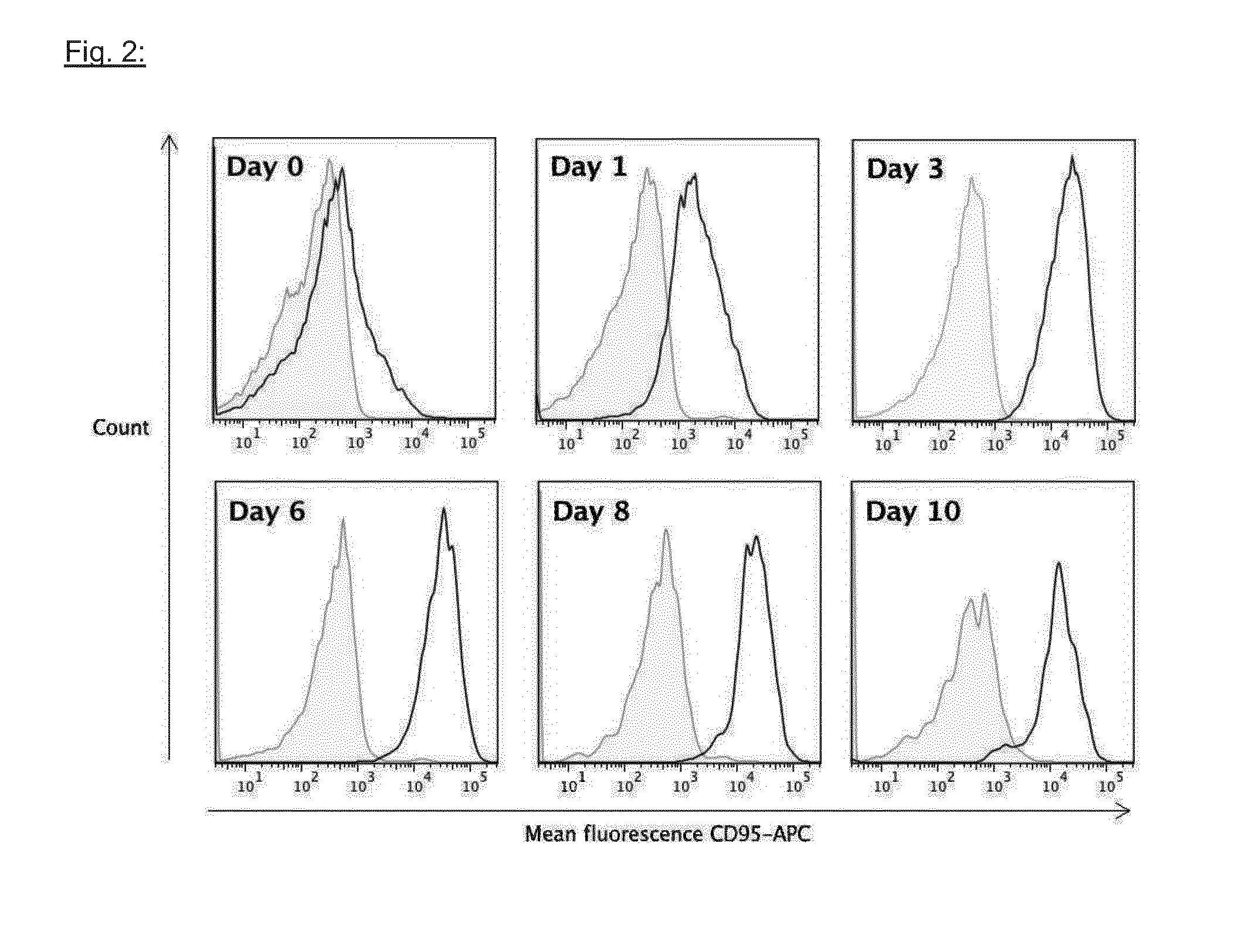Bi-specific antibodies for medical use
a technology of specific antibodies and antibodies, applied in the field of bispecific antibodies for medical use, can solve problems such as failure of applicability, achieve the effects of improving the specificity, the affinity and/or avidity of binding, and improving the reproducibility of recombinant molecules
- Summary
- Abstract
- Description
- Claims
- Application Information
AI Technical Summary
Benefits of technology
Problems solved by technology
Method used
Image
Examples
example 1a
Production of an Exemplary Antibody Format by Chemical Hybridization of Fab Fragments
[0246]Bispecific (Fab′)2 antibodies as described above in FIG. 1A were prepared and as described in Jung et al. Eur. J. Immunol. 21:2431, 1991. Briefly, the CD20 antibody Rituximab was purchased from Roche Pharma AG (Germany), the CD95 antibody (Apo-1 antibody) was purified from hybridoma culture supernatants. The Apo-1 antibody can be purchased in purified form (BMS151) from eBioscience, San Diego, Calif. 92121 Antibodies were purified using Protein A affinity chromatography, and the myc antibody was obtained from supernatants of the hybridoma clone clone 9E10 (CRL-1729, ATCC Manassas, Va., USA). Both antibodies were digested by pepsin, modified and hybridized to obtain a bispecific Fab2 fragment (bsFab2) as described in the paper mentioned above. Bispecific antibodies with CD40×CD95- and myc×CD95-specificity were produced accordingly. Parental antibodies directed to CD40 and the myc protein were p...
example 1b
Production of an Exemplary Antibody Format by Recombinant Engineering, Recombinant Bispecific Fab-Single Chain (Herein Also Called bsFabXsc or NA-C20)
[0249]Bispecific NA-C20 antibodies as described above in FIG. 1B were prepared and employing the sequences described in FIG. 9. The genetic construct encoding the antibody was stably transfected into Sp2 / 0 cells using standard techniques. The protein was purified from supernatants of transfected cells using affinity chromatography with kappa-select, purchased from GE-Healthcare, Life Sciences, Freiburg, Germany.
example 2
Expression of CD95 on Human B-Cells Activated with 1 μg / mL PWM
[0250]Peripheral blood mononuclear cells (PBMC) of a normal healthy donor, isolated by density gradient centrifugation, were incubated with pokeweed mitogen (PWM, 1 μg / ml, Sigma Aldrich, Taufkirchen, Germany) for 6 days and washed. At the indicated time points cells were removed from the culture flasks and analyzed by flow cytometry. To this end cells were stained with a CD19 antibody or an isotype control antibody coupled to pacific blue, a CD95 antibody coupled to allophycocyanin (APC) and the 7-amino-actinomycin D (7-AAD) dye to clearly identify viable cells. Viable, CD19-positive cells were gated and analyzed. Antibodies were purchased from Biolegend, San Diego, Calif. 92121. Results are provided in FIG. 2. Bright profiles were obtained with an isotype control-dark profiles with the CD95 antibody.
[0251]Conclusion: While CD95 is not detectable on resting B cells its expression rises after 1 day of PWM stimulation, reac...
PUM
| Property | Measurement | Unit |
|---|---|---|
| surface | aaaaa | aaaaa |
| cell surface | aaaaa | aaaaa |
| reactivity | aaaaa | aaaaa |
Abstract
Description
Claims
Application Information
 Login to View More
Login to View More - R&D
- Intellectual Property
- Life Sciences
- Materials
- Tech Scout
- Unparalleled Data Quality
- Higher Quality Content
- 60% Fewer Hallucinations
Browse by: Latest US Patents, China's latest patents, Technical Efficacy Thesaurus, Application Domain, Technology Topic, Popular Technical Reports.
© 2025 PatSnap. All rights reserved.Legal|Privacy policy|Modern Slavery Act Transparency Statement|Sitemap|About US| Contact US: help@patsnap.com



